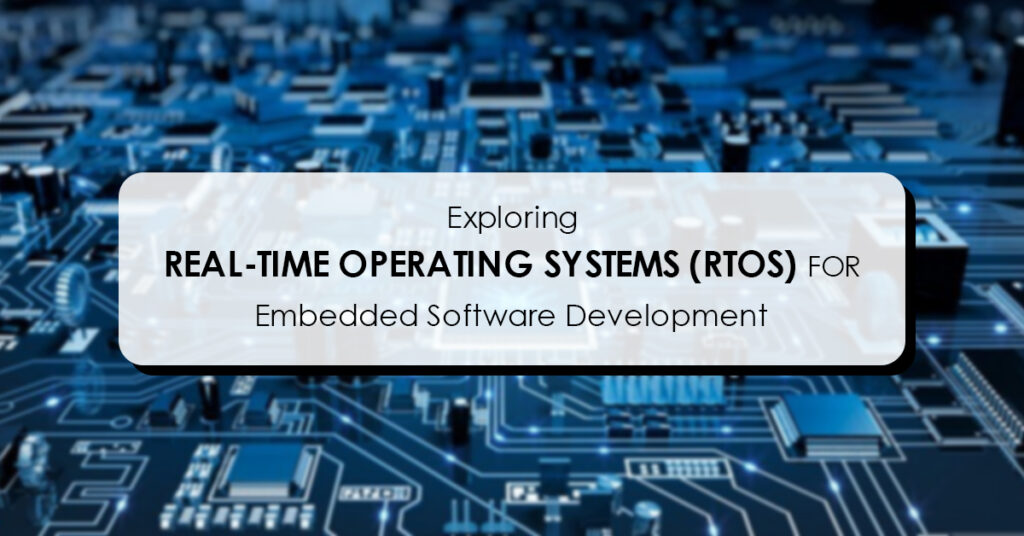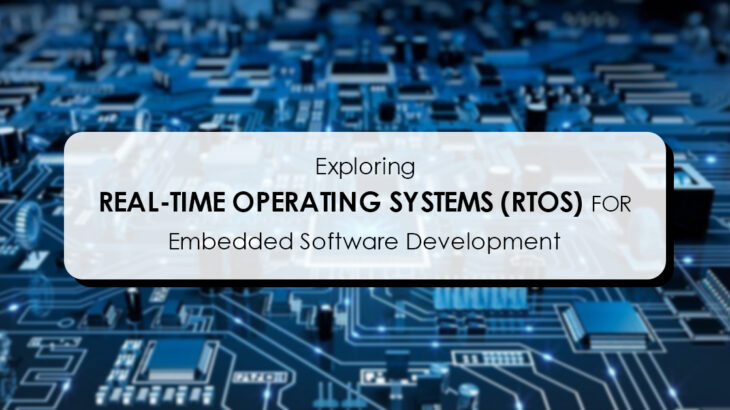
In today’s product development world, embedded developers need to find ways to develop a system with expanded features in less time. Real-Time Operating Systems (RTOS) are crucial in developing embedded software applications as they efficiently increase task management and resource sharing. They offer precise timing and efficient resource management, making them ideal for time-critical systems. This blog post aims to provide a deep understanding of RTOS in embedded software development. It also explores the key features, advantages, and real-time challenges of using RTOS. Finally, this blog also explains the essential considerations in selecting and implementing the RTOS in your projects.
What Is An RTOS?
Let’s begin by understanding what a Real-Time Operating System (RTOS) is. An RTOS is a software solution specifically created to manage CPU time, particularly in time-critical embedded systems, efficiently.
The primary distinction between a traditional operating system like Windows and an RTOS commonly used in embedded systems lies in their response time to external events. While a regular OS offers a non-deterministic response to events, with no guarantee of processing time, prioritizing perceived user responsiveness over underlying tasks, an RTOS aims for fast and deterministic reactions.
Developers familiar with operating systems like Windows or Linux will find similarities in embedded RTOS characteristics. They are designed to operate within systems with limited memory and to function continuously without requiring frequent resets.
Due to its focus on quick event response and performance under heavy loads, an RTOS may exhibit slower performance when handling large tasks than other operating systems.
Key Features & Advantages Of RTOS
RTOS offers numerous features, making it popular in embedded software development. These features include task scheduling, memory management, interrupt handling, device driver support, and synchronization mechanisms. Embedded developers can achieve efficient and reliable system performance through these enhanced features.
The notable benefits of using an RTOS include reduced latency, system reliability, scalability, and improved responsiveness.
Considerations For Selecting An RTOS:
It is essential that you understand and consider the various factors in choosing the right RTOS for your project. These include system constraints, task requirements, resource utilization, licensing models, development tools and support, scalability, and community support. Hence, you can select the suitable RTOS that aligns with the project goals and constraints by considering these suggested considerations.
Challenges & Mitigation Strategies:
Developing RTOS has its own set of challenges. It includes managing and understanding the task priorities, resource utilization, inter-task communication and synchronization, and debugging real-time issues. However, these issues can be overcome with proper design practices, utilization of debugging tools, and in-depth knowledge of the chosen RTOS.
Examples Of Popular RTOS:
Real-time operating systems find applications in various industries and domains. Some notable examples include command control systems, airline traffic control systems, airline reservation systems, network multimedia systems and even for heart pacemakers. These systems offer extreme precision and efficiency to ensure the timely execution of critical tasks. Some of the well known RTOS in the industry are: Deos (DDC-I), embOS (SEGGER), FreeRTOS (Amazon), Integrity (Green Hills Software), Keil RTX (ARM) and LynxOS (Lynx Software Technologies)
Real-Time Operating Systems (RTOS) are vital components in developing embedded software applications. Developers can build efficient, reliable, responsive systems by harnessing their features and understanding their considerations. With this knowledge, you can embark on your RTOS journey with Sunstream through our embedded software development services. We also provide Hardware and PCB design services through OrCAD, Altium and Allegro PCB applications to streamline the design process, improve productivity, and ensure electronic design accuracy.




 +1.585.935.7123
+1.585.935.7123 +91-804-148-6861
+91-804-148-6861